#farmersmarkets
Explore tagged Tumblr posts
Text
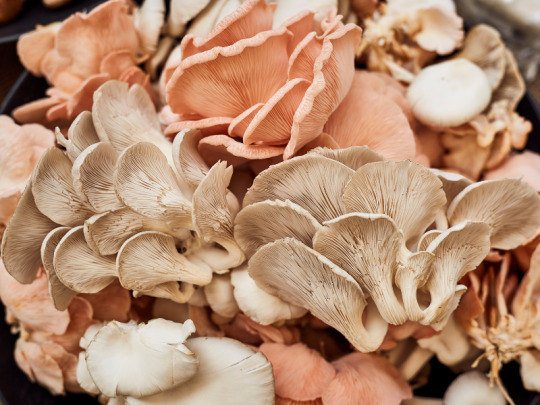
Make room for mushrooms this week as National Mushroom Day is observed every year on October 15th! Fall is the perfect time to celebrate the fascinating world of fruiting fungi, as the damper, cooler conditions usher in prime time for a host of these deliciously tasty morsels.
Mushrooms can provide a wonderful substitute for meat and seafood in many recipes, including your Thanksgiving and holiday spreads. We carry fresh mushrooms in all our farmers market locations, where you can find them being sold by our dedicated mushroom vendors and at some of our diversified farmstalls.
We recently chatted with Ted Hall from Mushrooms.NYC to learn more about their grow spaces in the southern Catskills and the range of edible mushrooms they produce year-round.
How did Mushrooms.NYC get started?
I have a background in climate policy studies with Columbia University Earth Institute, while my wife Anne was a chef. We are passionate about food security and access, regenerative farming and nutrition health and education. In 2017, we were expecting our second child and had started an urban farm in Far Rockaway. We found out about a mushroom farm in New York City that was looking for soil and needed help turning around its operations to stay afloat.
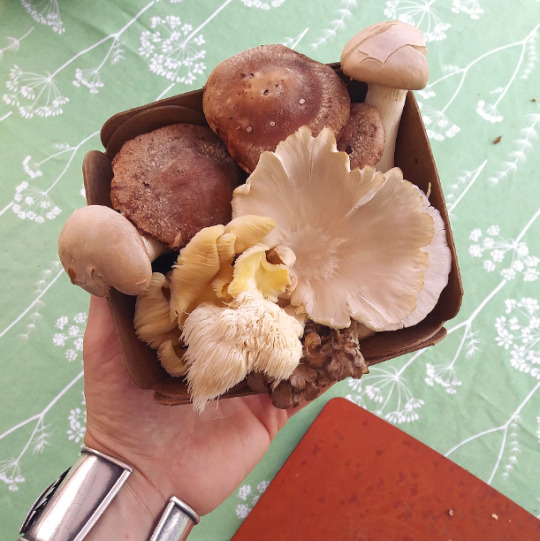
Anne expressed interest in taking over the reins of this farm and working with restaurants to supply them with locally grown, gourmet fresh mushrooms, while I managed the on-the-ground aspects. We took a leap of faith and, along with another friend, we were able to turn around the operation from losing money to becoming economically viable. According to Cornell Cooperative Extension's Urban Agriculture and Small Farms program we were the first and only mushroom farm in all five boroughs as of 2019!
Unfortunately, we had to demolish our New York City grow space during the lockdown of the Covid-19 pandemic. We moved our operations to Ellenville, NY where we currently employ a team of nine people. Mushrooms.NYC is part of a Baha'i "Storehouse Cooperative” so we continue to share our profits and vital resources with everyone in Manhattan who we’ve worked with before.
What type of mushrooms do you cultivate year-round?
We have one small, highly controlled indoor grow space and another larger space that’s less regulated like a ventilated greenhouse using natural sunlight and heat to keep things from freezing in the winter.
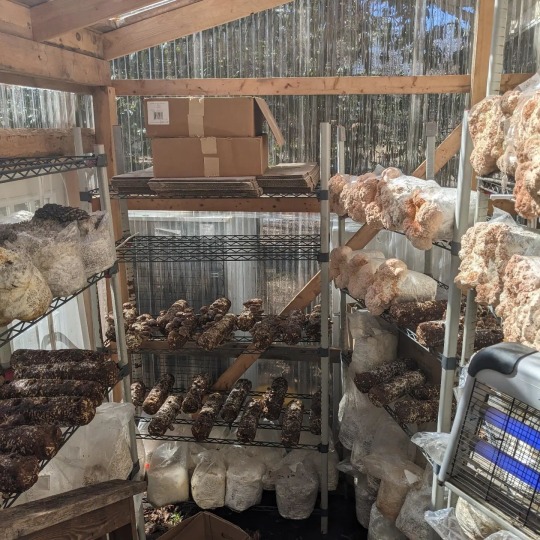
Both areas are set up to be as passive as possible and use the least amount of energy while working with the existing weather patterns. These spaces allow us to consistently produce mushrooms year-round using a hands-on approach that is a lot less automated and energy intensive than other mushroom growing operations. Winter is always a bit trickier though as we have to use heat when conditions get really cold.
We organically cultivate many kinds of mushrooms that are packed with essential vitamins, compounds and minerals that support healthy individuals. All our mushrooms provide Vitamin B-12 when they are slow-cooked:
Shiitake: Shiitake mushrooms feature all nine amino acids which make them a full and complete protein and a great substitute for animal-derived protein.
Oyster (Blue/Silver, Brown, Gold, Pink, White): These common culinary mushrooms are prized for their delicate texture and mild, savory flavor. Oyster mushrooms also provide a full protein.
King Oyster/Trumpet
Lion’s Mane: These beautiful mushrooms look like waterfalls or icicles. When blanched in salted water, lion's mane mushrooms take on the flavor and texture of succulent shellfish such as crab or lobster, so make a great plant-based substitution.
White Coral: A relative of lion’s mane that’s more textured. It’s harder to cultivate so we don’t always have it.
Pioppino: An Italian species that’s also known as Black Poplar Mushroom or Velvet Pioppini. These mushrooms are very flavorful, almost like a taller, slender shiitake. Their flavor spreads on everything to just cover a dish.
Black Pearl: A species that lies somewhere in-between a King Oyster/Trumpet or a Blue Oyster.
Hen of the Woods: This species also provides a full protein but it’s very tricky to cultivate. But we just had our first successful cultivation using spores sourced from growers in Pennsylvania!
For our indoor cultivation, we use a growing medium made up of milled hard woods and certified organic grain that is the by-product of other operations. We were using propane to pasteurize our medium, but, in our ongoing quest to become more sustainable, we have switched to electric-generated steam. We would ideally like to convert the process to using solar or biogas, or even methane if we can do it in a well-ventilated area.
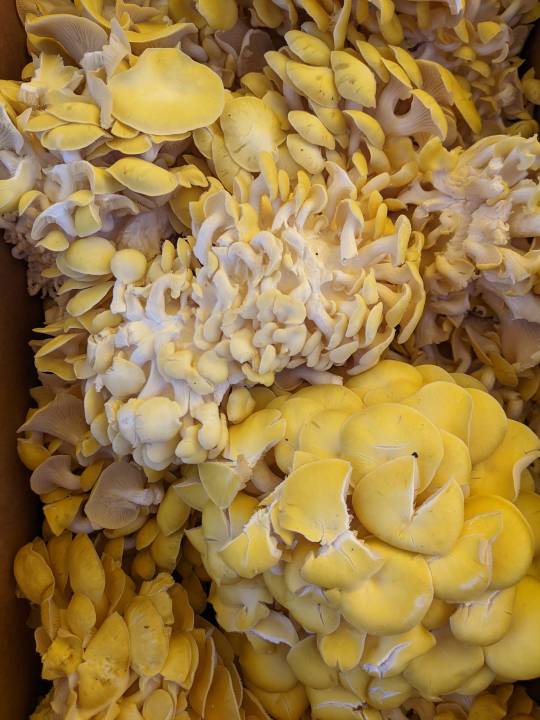
We also have outdoor cultivated growth in a forested area just under an acre in size that mimics a natural environment, which means we must watch for pest activity. These mushrooms are grown in substrate that’s free of contamination from other spores, so we know exactly what species we’re harvesting. The mushrooms are watered entirely by natural precipitation and are loaded with Vitamin D thanks to their exposure to natural sunlight.
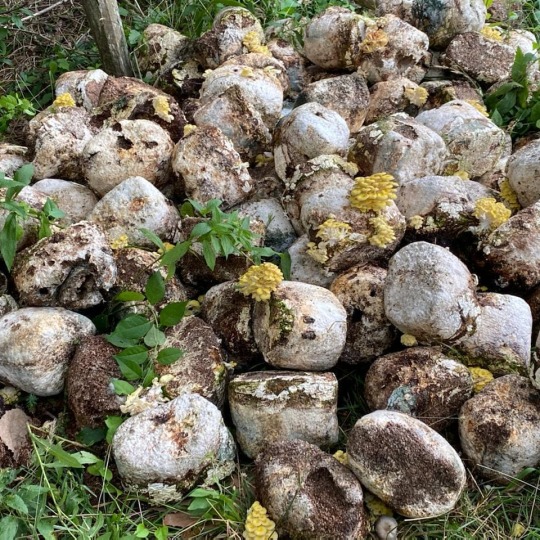
We grow Gold and Silver Oyster, Lion’s Mane, Pioppino, Shiitake and sometime White Coral in this outdoor space. We can even produce a small amount of blue oyster and shiitake outside towards the end of winter as long as there is a little bit of snow melting during the daytime. These winter mushrooms are insanely tasty!
However, late spring and late summer-early fall are the sweet spots for mushroom growing, both indoors and outdoors. There is a big explosion of forage during these periods and our operations line up much better with the climate at that point.
What types of mushrooms do you forage for?
We’ve always foraged for wild mushrooms, but up until recently we were just doing it recreationally. Two years ago, we were able to obtain a license to forage nationally, which is not easy to come by as most folks only have a state foraging license.
Foraging has become more challenging these days as there are now commercial entities that are over-harvesting wild mushrooms and shipping them in from the west coast. There’s a lot of pressure to over-harvest mushrooms for profit. Some recreational foragers are also harvesting so much that it’s destroying the ecological integrity of the mushrooms' ecosystems.
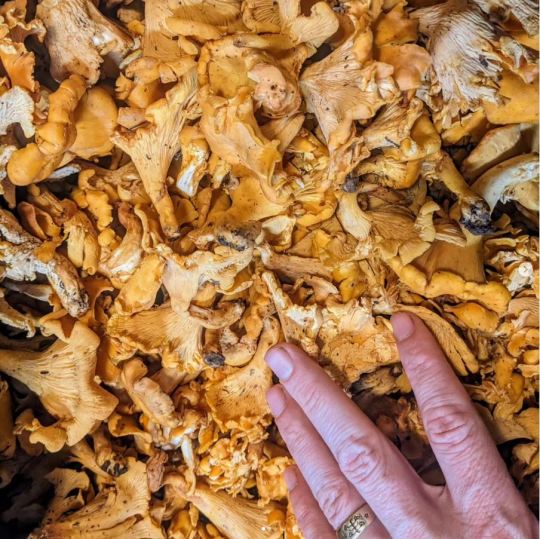
Mushrooms.NYC is committed to harvesting our wild forage in a way that’s sustainable and sensitive to the ecosystem surrounding our farm. We are a mission-driven cooperative so are not trying to sell as many mushrooms as possible. The way we forage is a lot more labor intensive and less extractive, so the quality of our harvest is higher and relatively more expensive.
In addition to the pressures of over-harvesting, wild mushrooms are also sensitive to climate change. Mushrooms need snow as part of their lifecycle. Because of temperature change here in the Catskills, the winter-round snowpack is receding and has retreated to higher and higher elevations. A lot of well-known patches that had been there for generations are not producing edible mushrooms anymore. We are seeing a lot of erosion in our intact forests which is an indication that their mycological foundations are starting to give out. This means we are having to venture higher up each year to find our wild mushrooms.
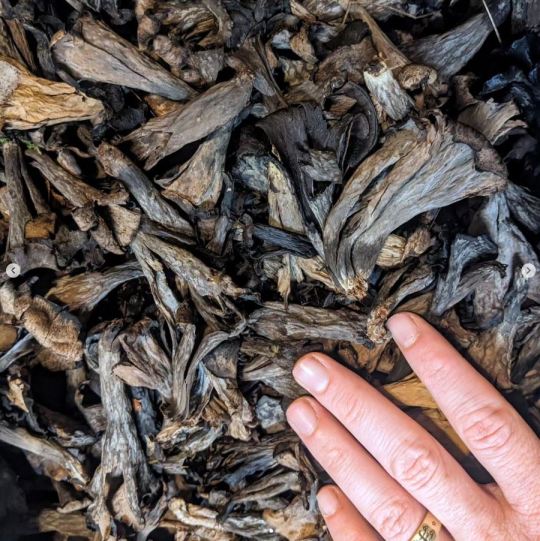
We haven’t had much luck with Morels. We were able to find a small number last year, but it wasn’t enough to bring to the farmers market. However, we do collect and sell several types of locally foraged wild mushrooms including:
Black Trumpet
Chaga
Chanterelles
Chicken of the Woods
Coral
Hen of the Woods
Honey
Lobster
Reishi
Turkey Tail (we forage for several medicinal varieties)
Regional varieties like Bolete that are super tasty!
Thank you, Ted, for sharing these fascinating and fun fungi insights. In addition to their variety of fresh, gourmet mushrooms, and as part of their mission to spread access to fresh, nutritious food, Mushrooms.NYC also sells ready to fruit “grow blocks”. These kits are as easy as growing basil and will fruit for a couple of years so you can grow your very own culinary mushrooms at home.
#downtoearthmkts#farmersmarket#farmersmarkets#localfood#eatlocal#mushrooms#foraging#foraged food#foraged mushrooms#eatdowntoearth
3 notes
·
View notes
Text
#kitefin teas#tea#tealife#tealovers#herbal wellness#farmersmarket#farmersmarkets#teashop#tea shop#looseleaftea#herbal
3 notes
·
View notes
Text
The Best Farmers Markets Around the Globe
For cheap and best Travel Bookings - https://tripsdeals.com/
Farmers' markets have long been a staple of local food culture, offering fresh produce, artisanal goods, and a unique way to experience a community’s heritage. These vibrant, open-air markets attract tourists and locals alike, making them perfect destinations for food lovers. Around the world, there are many iconic farmers' markets that stand out for their exceptional quality, variety, and charm. Here are some of the best farmers' markets to explore globally.
La Boqueria (Barcelona, Spain) Situated in the heart of Barcelona, La Boqueria is a bustling, colorful market known for its wide selection of fresh produce, meats, seafood, and ready-to-eat foods. The market dates back to the 13th century and is a must-visit for anyone exploring the city. You can find local specialties such as Iberian ham, olives, and fresh fruit juices, making it a perfect stop for food enthusiasts.
Borough Market (London, UK) As one of London's oldest and most renowned food markets, Borough Market offers an impressive array of fresh, seasonal produce, artisan bread, cheeses, and street food. Its vibrant atmosphere and proximity to London Bridge make it a popular destination for both locals and tourists. It’s a fantastic spot to sample British classics and international flavors.
Pike Place Market (Seattle, USA) Known for its iconic fish-throwing vendors and fresh seafood, Pike Place Market in Seattle is a renowned landmark that draws millions of visitors each year. Besides seafood, this market also offers flowers, artisanal goods, local cheeses, and a variety of delicious street foods. The market is a great representation of Seattle’s thriving food scene.
Mercado de San Miguel (Madrid, Spain) Another top destination in Spain is Madrid's Mercado de San Miguel, a historical market offering an impressive selection of Spanish delicacies. It’s the place to go for tapas, cured meats, cheeses, and wine. With its beautiful iron structure and lively atmosphere, it's an ideal spot for sampling local flavors and enjoying a glass of wine.
Queen Victoria Market (Melbourne, Australia) As Melbourne’s largest open-air market, Queen Victoria Market is a local favorite. The market is known for its diverse range of fresh produce, gourmet foods, and artisanal products. It also hosts night markets with live music and food trucks, creating a lively environment for visitors to enjoy.
From fresh produce to unique street foods, these farmers' markets offer something for everyone. Whether you're a food lover or just looking to explore a city's culture, visiting a farmers' market is an experience not to be missed.
The Best Farmers Markets Around the Globe
#farmersmarkets#bestfarmersmarkets#travelguide#foodie#globaltravel#localproduce#marketstovisit#freshfood#travelblog#culinarytourism
0 notes
Text
On Account of Rain
Weather finger-drums the canopy, rainbowing rivers slither over asphalt poured in the 1950’s, a flash in our periphery chased seven even seconds after by electricity’s booming laughter. What’s good for the farmer isn’t always for the market. Mark that. Keeping a calendar is the most socially acceptable form of gambling. Pick a square, any square, ignore the forecast, commit the affair. Knock the…

View On WordPress
0 notes
Photo

Thank you #youngmcdonaldfarm for letting me help at the #newbraunfelsfarmersmarket we had a wonderful time and met tons of great people #funtimehadbyall #bylocal #farmersmarkets #newbraunsfelds #thelesnestravels #travelingwiththelesne #thelesne (at New Braunfels, Texas) https://www.instagram.com/p/CqObjv_uv0F/?igshid=NGJjMDIxMWI=
#youngmcdonaldfarm#newbraunfelsfarmersmarket#funtimehadbyall#bylocal#farmersmarkets#newbraunsfelds#thelesnestravels#travelingwiththelesne#thelesne
0 notes
Text

This Pin was created by Nikki Heasley on Pinterest. Farmers market/peaches/aesthetic/summer/fruit/mood board
4 notes
·
View notes
Text

Breakfast ideas: Squaw bread, vegan mayo, sunflower seeds, tomatoes & sunflower sprouts 🍅🌻🌱
6 notes
·
View notes
Text




Summer
#summer#farmersmarket#coffeeshop#bookstore#picnic#coffee#market#books#nature#summertime#summervibes#sunshine#moodboard#aesthetic#cafe aesthetic#all pics from pinterest
12 notes
·
View notes
Text

Sun dried cherry and grape tomatoes, with thyme, oregano, and rosemary
9 notes
·
View notes
Text
do they have a ship name????


#i mean#ive been calling them “farmersmarket” for a while now#or maybe cilantro??????#game and watch#chef game and watch#green house game and watch#[beep beep]#stanley the bugman#also i could NOT find a png for stanley lmao
7 notes
·
View notes
Text

When people think of buzzing, busy bees, the one species that nearly always flits to mind first is the charismatic and much celebrated honey bee – Apis mellifera. The honey bee is widely recognized and well-loved thanks to its magical ability to transform floral nectar into sweet and delicious honey, a household pantry (and farmers market!) staple. This industrious, hard-working insect is also highly prized for the pollination it provides for a variety of crops including apples, melons, cranberries, pumpkins, squash, broccoli and almonds.
While it is the most well-known type of bee, many of us aren’t aware that honey bees are not native to the continental United States. In fact, they are indigenous to Eurasia and were introduced here by European settlers who brought over the first hives to these shores in 1622. Nowadays, honey bees are considered essential to American agriculture, with one in every three bites of food produced from the pollination they perform. Amongst commercial beekeepers and farmers, domesticated honey bees are thought of as a livestock commodity, just like sheep, pigs and cattle.
While there has been an enormous amount of media coverage and high-profile campaigns to “save the honey bees” that have stoked concerns for the welfare of the species in recent years amidst a spike in colony collapses, our attentions may have been misplaced. Out of the 20,000 bee species that exist worldwide, honey bees are the least in need of saving and can be counted as a harmful invasive species when they outcompete wild, native bees for food. Fortunately, environmentalists and experts are now working to correct the murky messaging and redirect attention to the plight of our native bee populations, many of which are truly endangered.
Native Bees Native bees are indispensable to the health of our natural environment, yet they are declining due to escalating threats from agricultural expansion, pesticide use, habitat loss and climate change. Ironically, scientists have established that agricultural yields can be higher with the superior pollination provided by our native bees versus that of honey bees. Of course, it makes sense that bee species that have co-evolved for millennia alongside crops indigenous to the Americas, such as cranberries, blueberries and squash, are the ones best designed to most efficiently extract pollen from these plants.
Here is a closer look at some native bee species and the local crops they help pollinate:
1. Leafcutter Bees Leafcutter bees earned their name because they cut oval-shaped fragments from deciduous leaves and use them to construct nest tunnels inside rotting wood, hollow-stemmed plants or in the ground. Unlike highly social honey bees who live together in hives, leafcutter bees are solitary individuals that build their own nests, live alone and never venture farther than 100 yards from their home base. Leafcutter bees can be used commercially to pollinate a variety of fruit and vegetables including blueberries, sunflowers, onions, carrots and alfalfa. Farmers provide bee boards for the insects to nest in, shelter them during the winter, and then place them outside in time for the next growing season.
2. Bumble Bees Bumble bees are the only bees native to North America that are truly social and live and thrive together in colonies. These fuzzy bees pollinate a variety of food crops including tomatoes, potatoes, blueberries, pumpkins, cranberries, bell peppers and eggplant using a technique known as buzz pollination during which they audibly vibrate, or buzz, against a flower’s anthers to shake loose its pollen. Buzz pollination has been shown to increase crop yield, while bumble bees are also more effective than honey bees at pollinating crops grown in greenhouses. Currently, the Common Eastern bumble bee (Bombus impatiens) is the only bumble bee native to the eastern U.S. and Canada that is reared and used commercially by farmers for its pollination services.
3. Squash Bees Before honey bees were introduced to the New World, native squash bees (Peponapis and Xenoglossa) were responsible for helping with the domestication and production of squashes and gourds by indigenous peoples throughout the Americas. Squash bees tend to be solitary but have been known to group their nests together in suitable ground habitat. They are specialist bees who are unique in that they will only visit flowers within the cucurbit family (i.e. squashes, pumpkins, melons, cucumbers and zucchini). When present in adequate numbers, these native bees have been shown to be more efficient pollinators of commercial squash crops than honey bees.
Scientists estimate that over 52% of the 1,437 identified native bee species in the United States are declining at an alarming rate. To support these critical critters and the vital pollination services they provide, the best approach is to start local, right in your own backyard. Make your garden as bee-friendly as possible by eliminating or minimizing pesticide use, planting native wildflowers such as coneflowers, wild bergamot and New England aster, and skipping the fall cleanup to provide bees with shelter in which to overwinter such as hollow stems and piles of dead leaves. For other ideas on how to keep the buzz going, visit this link.
#downtoearthmkts#eatlocal#buylocal#shoplocal#farmersmarkets#localfood#farmersmarket#eatdowntoearth#honey bees#bumble bees#native bees#bee pollination
3 notes
·
View notes
Text
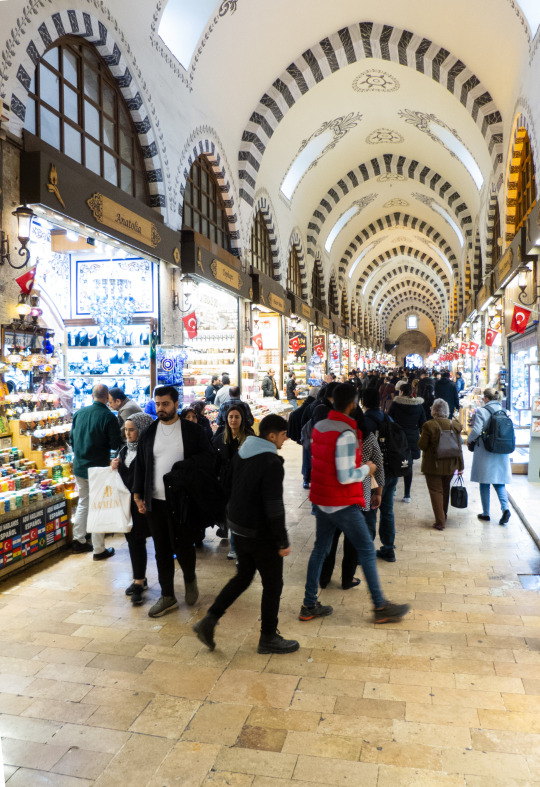
The Armenian market
Istanbul, Türkiye
#Istanbul#Türkiye#travel#travelphotography#old city#farm market#farmersmarket#market#marketplace#indoor#people#food market
62 notes
·
View notes
Text
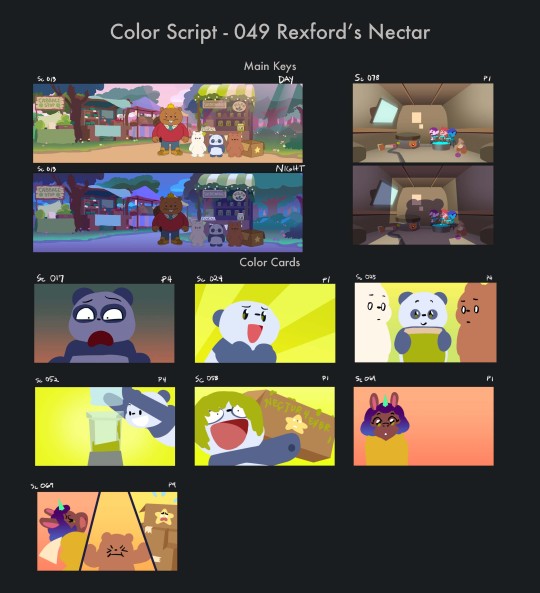








A color script and background paintings I did for episode "Rexford's Nectar." You can stream this ep and more We Baby Bears on Max! 🐻❄️🐼🐻📦🌟
#artists on tumblr#artists on instagram#digital art#digital painting#women in animation#art#photoshop#concept art#visdev#we baby bears#illustration#unica#rexfordsnectar#painting#farmersmarket#hbomax#cartoonnetwork#cns#cartoon network studios#animation#backgrounds#background art#background#aapi art#we bare bears#wbb#background painting
16 notes
·
View notes
Text
The One Where They Did A Farmers Market
Summary: The boys, for some reason, decided to sell some stuff at the local farmers market.
Words: 1130 ish I added a little more
Warnings: swearing, Josh with a chainsaw, purple neon shorts, farmersmarket!jake
Jake stood behind his stall as he looked down at his little pots of jam. He smiled to himself as he stood there.
Nice, he thought.
He hoped the wine he worked his ass off making would also sell well because damn, that was rough but also worth it.
The stuff is not only delicious, with hints of delectable fruits and the smokyness of the wood from the barrel, but that shit will get you fucking DRUNK.
He felt good and looked good. He wore his big black wide-brimmed hat with a blue and white striped shirt, with one button done up as usual. He felt like part of the market, like a fancy farmer.
Josh said he looked the part, too, but should have worn his straw hat instead.
His eyes went from his precious jams to the stall opposite. There, staring back at him, was Sam. He sat in his camping chair, his head barely peaking over the stall table, chewing away just watching Jake.
Jake's brow furrowed, but he laughed softly as he moved to go look at his brother's stall. He eyed the sign his younger brother had made for the market as he approached the table.
It was a poorly taken photo of Sam with a thumbs up and cheesy smile, with the words "Anything can be pickled & tickled!" sprawled across it in thick, black letters.
Jake's eyes went from the sign to the man sitting down, who still chewed away as he ate something.
"Cwan eye hfelp hew?" Sam asked as he chewed.
"Sammy, what does your sign mean?"
Sam looked up at his sign, despite the sun burning down on his face, and read it out loud. He shrugged. "Seems clear to me!" He swallowed, then dug his fingers into the glass jar of pickles and grabbed another one to eat.
"Shouldn't you sell your... pickled goods rather than just eating them?" Jake watched, slightly concerned because he spotted two empty jars pushed off to the side.
"Whwats bpetter 'dan seein tthe ownder eatin' dare' own prwoduuuce?" He answered. And with that, Jake turned away and went over to the stall next to Sam's, which belonged to Danny.
Danny decided to sell some plants he had been growing along with some homemade plant pots. After their somewhat eventful pottery class, Danny got into a new hobby and actually became quite successful at it.
His pots and mini-pot pals were a hit. Jake approached with a smile as Danny handed the wrapped-up pot to a lady who gushed about plants with the curly-haired drummer. He wished her a good day before acknowledging Jake.
"Looking the part," He laughed
Jake returned a soft laugh and then looked at the stall. "I'm really impressed."
Danny smiled brightly and thanked him. "How's yours coming along?"
Jake shrugged. "Okay, I sold some stuff. "I'm worried the wine will have people pass out, though." Danny laughed as he sprayed some water on a hanging plant.
"I'm pretty sure Sammy is just eating his stuff, but it's fun to participate." Danny commented.
Jake went to say something, but the sound of a chainsaw being ripped alive stopped him.
He knew Josh was doing woodwork and wood carving; hell, he'd watched his brother try his best to twiddle an animal out of a small log. But he didn't expect to see his twin, chainsaw in hand, goggles on, going ham on a log.
He was moving the chainsaw around, making odd cuts into the wood. Taking out chunks here and there and making the odd line.
He stopped and lowered the chainsaw as he moved his head from side to side, looking at the log and at his new masterpiece.
To Jake, it looked like someone got drunk, got hold of a chainsaw, and lost a fight with the log. But his twin seemed pleased as he turned to look at him with a wide smile.
"Not bad. What is it?" Jake asked as he stood there, trying hard to see what the heck he just carved.
Josh's smile fell. "Can't you see?"It's a sunset."
"Eye sfeee eit." Sam spoke out, bringing everyone's attention to him suddenly standing with them while eating from a jar of pickled peppers.
Jake eyed the new jaw in his brother's hand but then noticed a few people at his stall. Patting his younger brother on the stomach, he quickly went over to try his charm at selling more stuff.
Josh pouted a little as he watched his twin walk off to sell his jams but smiled to Sam when the taller man lifted the jar with a wink.
Josh ripped the chainsaw back to life and went back to the log.
"Pepper Daniel?" Sam offered the open jar to his friend, who gladly took one.
"Have you sold any of your jars?"
Sam shrugged. "Yeah, a few. "Offering people a taste test helps, and I've sold some dog biscuits too."
Danny paused to think for a minute about asking about the dog biscuits, but Sam walked away.
Danny watched his friend walk away, still eating, as he looked at random stalls. The sound of the chainsaw going nuts brought his attention back to the small man who was currently attacking the log.
"You ok there, buddy?" Danny yelled.
Josh didn't hear him, he was in the zone and the chainsaw blocked out everything
His cheeks were red, and his whole body shook with the chainsaw as he wield it at this damn fucking log.
The rest of the guys didn't understand his obscure wood carvings were going to be a HIT. And then they'd all be sorry. They'd be begging him to make their own personal piece.
Back over at Jammin Jams, the name Jake gave his stall because hey, he likes jam and jamming.
"These are delightful!" The old lady pointed at the little pots of jam. Jake's cheeks rounded in a smile as he felt a wash of pure joy. He loved getting praised. And the fact that this old lady was currently acting like he was the jam master when she probably knew how to make jam was making his cheeks hurt with happiness.
"What a handsome, clever man!" He gushed again and looked down shyly, his hat blocking his view of Sam, who was walking past the old lady, heading back to his stall, one eyebrow raised as he chewed away.
"Would you like to try some?" He lifted a little pot of mixed berries he had made with a smile. The old lady made a noise that Jake took as a yes and offered her a sample.
"Oh my, what is that?"
Jake leaned closer with a smile, his giant hat almost getting in the way. "That, my dear, is the mix of strawberries and--"
Sam watched as Jake chatted away to the lady as he ate some pickled onions. The lady seemed charmed by his brother's smile and his farmer's outfit and was buying nearly the whole fucking stall.
Sam decided to dress casually with bright neon purple shorts and a vintage shirt that put every 80s pattern to shame. He sold some stuff, yeah, but maybe he needed to do something else.
Next time, he'll just shove that stupid straw hat on Jake wore once.
Josh soon came over to his stall with his goggles pushed into his hair, the indents of the tight goggles leaving an imprint around his eyes with a huge smile.
"Hey, do you have a first aid kit?"
#gvf#greta van fleet#greta van fic#greta van fleet fan fiction#greta van fanfic#greta van fleet fic#greta van fleet fanfic#josh gvf#josh kiszka#jake gvf#jake kiszka#sam gvf#sam kiszka#danny gvf#danny wagner#fics#another one to the pile lnao#thank you to everyone thst suggested ideas foe the boys this one's for you 🥂#farmersmarket!jake is a warning because that could make ppl spiral
42 notes
·
View notes
Text

This Pin was created by anialacint on Pinterest. Farmer’s Market 🍒
4 notes
·
View notes
Text
Walking Gratiot to Eastern Market



















#gratiot#sidewalks#crosswalks#urbanism#beautify streets#streets#detroit#downtowndetroit#carfree#farmersmarket#easternmarket#walkingdetroit
4 notes
·
View notes